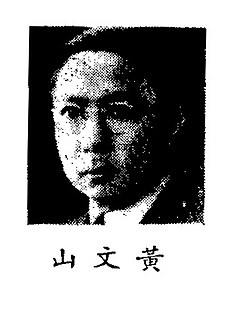
A social class is a grouping of people into a set of hierarchical social categories, the most common being the upper, middle and lower classes. Membership in a social class can for example be dependent on education, wealth, occupation, income, and belonging to a particular subculture or social network.

Rural sociology is a field of sociology traditionally associated with the study of social structure and conflict in rural areas. It is an active academic field in much of the world, originating in the United States in the 1910s with close ties to the national Department of Agriculture and land-grant university colleges of agriculture.

Robert King Merton was an American sociologist who is considered a founding father of modern sociology, and a major contributor to the subfield of criminology. He served as the 47th President of the American Sociological Association. He spent most of his career teaching at Columbia University, where he attained the rank of University Professor. In 1994 he was awarded the National Medal of Science for his contributions to the field and for having founded the sociology of science.

Political sociology is an interdisciplinary field of study concerned with exploring how governance and society interact and influence one another at the micro to macro levels of analysis. Interested in the social causes and consequences of how power is distributed and changes throughout and amongst societies, political sociology's focus ranges across individual families to the State as sites of social and political conflict and power contestation.

Social mobility is the movement of individuals, families, households, or other categories of people within or between social strata in a society. It is a change in social status relative to one's current social location within a given society. This movement occurs between layers or tiers in an open system of social stratification. Open stratification systems are those in which at least some value is given to achieved status characteristics in a society. The movement can be in a downward or upward direction. Markers for social mobility, such as education and class, are used to predict, discuss, and learn more about an individual or a group's mobility in society.
Charles Wright Mills was an American sociologist, and a professor of sociology at Columbia University from 1946 until his death in 1962. Mills was published widely in popular and intellectual journals. He is remembered for several books, such as The Power Elite, which introduced that term and describes the relationships and class alliances among the US political, military, and economic elites; White Collar: The American Middle Classes, on the American middle class; and The Sociological Imagination, which presents a model of analysis for the interdependence of subjective experiences within a person's biography, the general social structure, and historical development.

Nikolai Dmitriyevich Kondratiev was a Russian Soviet economist and proponent of the New Economic Policy (NEP) best known for the business cycle theory known as Kondratiev waves.

Social stratification refers to a society's categorization of its people into groups based on socioeconomic factors like wealth, income, race, education, ethnicity, gender, occupation, social status, or derived power. As such, stratification is the relative social position of persons within a social group, category, geographic region, or social unit.

Kayastha denotes a cluster of disparate Indian communities broadly categorised by the regions of the Indian subcontinent in which they were traditionally located—the Chitraguptavanshi Kayasthas of North India, the Chandraseniya Kayastha Prabhus of Maharashtra, the Bengali Kayasthas of Bengal and Karanas of Odisha. All of them were traditionally considered "writing castes", who had historically served the ruling powers as administrators, ministers and record-keepers.
Comparative history is the comparison of different societies which existed during the same time period or shared similar cultural conditions.
The American Journal of Physics is a monthly, peer-reviewed scientific journal published by the American Association of Physics Teachers and the American Institute of Physics. The editor-in-chief is Beth Parks of Colgate University.

Teacher education or teacher training refers to programs, policies, procedures, and provision designed to equip (prospective) teachers with the knowledge, attitudes, behaviors, approaches, methodologies and skills they require to perform their tasks effectively in the classroom, school, and wider community. The professionals who engage in training the prospective teachers are called teacher educators.
Sociologists use the concept of occupational prestige to measure the relative social-class positions people may achieve by practicing a given occupation. Occupational prestige results from the consensual rating of a job - based on the belief of that job's worthiness. The term prestige itself refers to the admiration and respect that a particular occupation holds in a society. Occupational prestige is prestige independent of particular individuals who occupy a job. Sociologists have identified prestige rankings for more than 700 occupations based on results from a series of national surveys. They have created a scale and then rank given occupations based on survey results.
The following events related to sociology occurred in the 1920s.
The following events related to sociology occurred in the 1950s.
Computer science education or computing education is the science and art of teaching and learning of computer science, computing and computational thinking. As a subdiscipline of pedagogy it also addresses the wider impact of computer science in society through its intersection with philosophy, psychology, linguistics, natural sciences, and mathematics. In comparison to science education and mathematics education, computer science (CS) education is a much younger field. In the history of computing, digital computers were only built from around the 1940s – although computation has been around for centuries since the invention of analog computers.
Sociology in Russia has developed since the beginning of the 20th century, despite an official ban on sociology in the Soviet Union from 1929 to 1956 and the dominance until recently of Marxist sociology. Despite sharp divisions since the breakup of the Soviet Union, the field of sociology in Russia now includes over 300 university departments, approximately 30 academic journals and several professional associations.

Pitirim Alexandrovich Sorokin was a Russian-American sociologist and political activist, who contributed to the social cycle theory.

Sociology of Revolution is a 1925 book by Russian American sociologist Pitirim Sorokin. Sociology of revolution as branch of sociology was developed by Thomas Hobbes in Leviathan. to a certain extent earlier than Sorokin. Hobbes lived and created in the period of English Revolution. In the opinion by Hobbes, "the war of all against all" begins in the period of revolution and of Civil War, when all men threaten by each man, when each man has the right to all things by right of strong man, when "Man Is Wolf to Man" Sorokin had generalized the data about the new revolutions, unknowns for Hobbes – French Revolution, Russian Revolution (1917), etc.

Huang Wenshan was a Chinese scholar of cultural studies, sociology, anthropology and ethnology.











